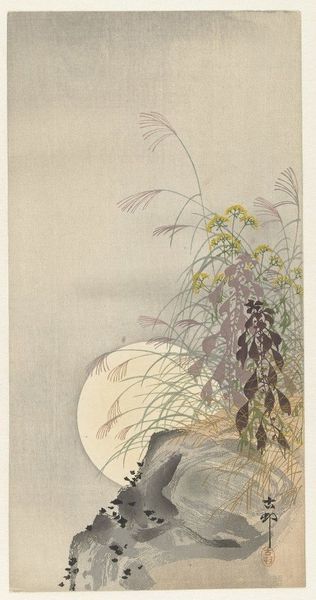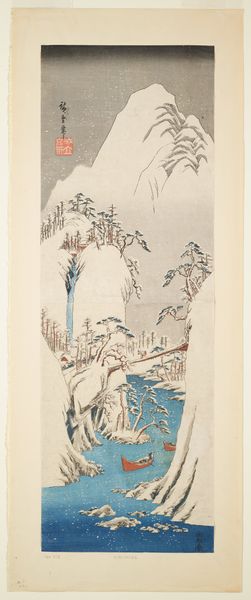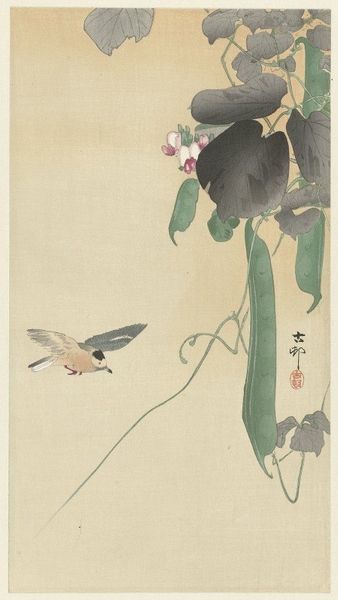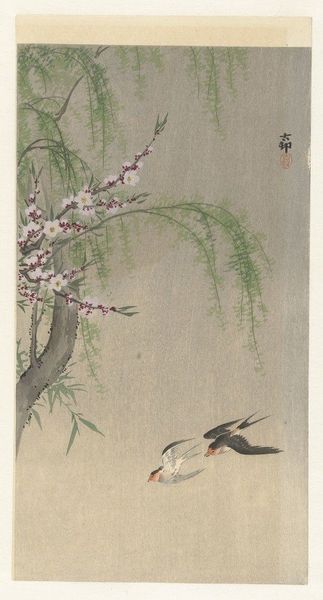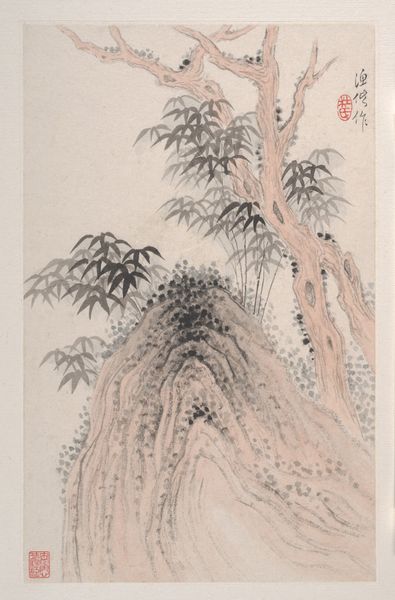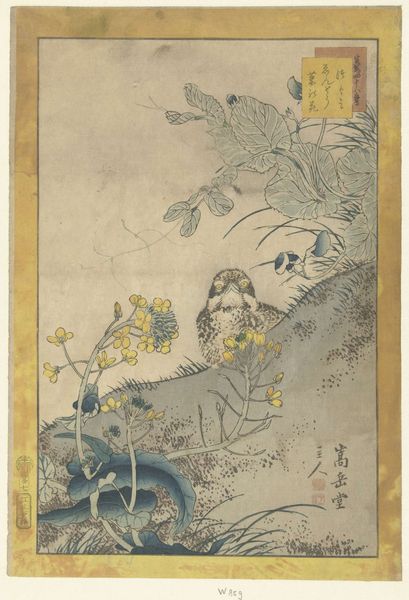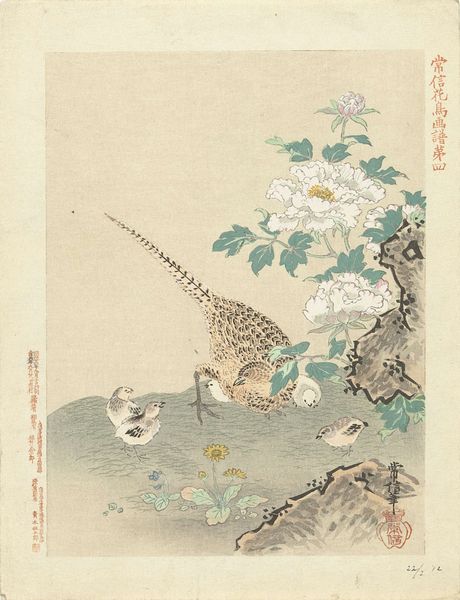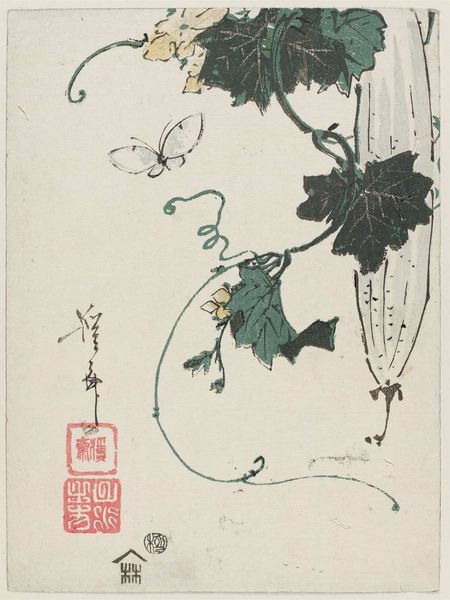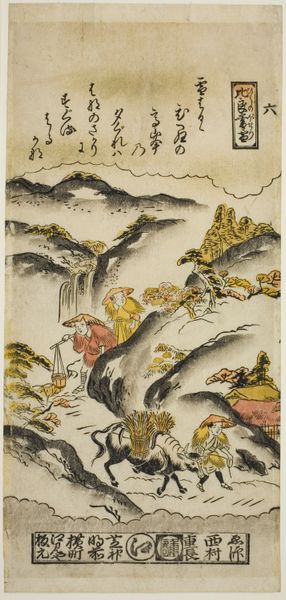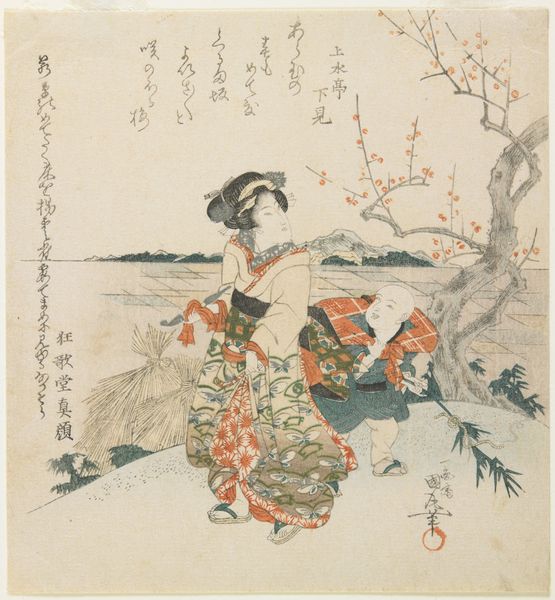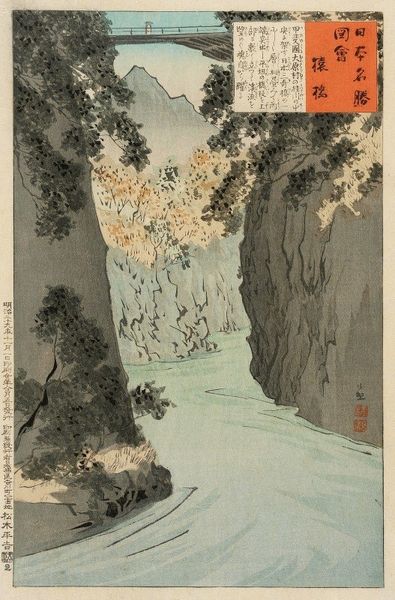
Copyright: Public Domain: Artvee
Ohara Koson created this woodblock print of frogs and tadpoles sometime between the late 19th and early 20th century. It's typical of the Shin-Hanga movement, meaning 'new prints,' which revitalized traditional Japanese art by incorporating Western elements. But it's not just a pretty picture of nature. The choice of subject matter, the humble frog, takes on symbolic meaning in the context of Japanese society. Frogs are associated with good luck and safe return, making this a meaningful image for people far from home, such as traveling merchants. Notice how the lotus plants are depicted. A traditional symbol in Buddhism, the presence of lotuses in this image may be connected to the rise in Japanese nationalism, which promoted a unique cultural identity. It's a reminder that even seemingly simple nature prints can have deep cultural roots. To learn more, we can explore the archives of the printmaking societies of the time, which would reveal a richer understanding of the artistic trends and social values reflected in this charming image.
Comments
No comments
Be the first to comment and join the conversation on the ultimate creative platform.
